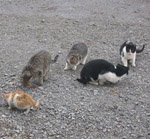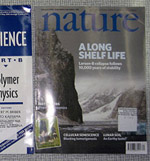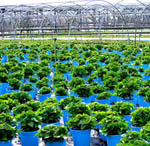Study illustrates impact of adajcent land use on stream water quality
 Agriculture,
Agriculture,  Freshwater
Freshwater  A new case study examines the impact that riparian land use can have on the water quality of headwater streams. Scientists from the University of Arkansas conducted their study on a 1525 meter stretch of the the appropriately named Research Creek in the Ozark Highlands near Fayetteville.
A new case study examines the impact that riparian land use can have on the water quality of headwater streams. Scientists from the University of Arkansas conducted their study on a 1525 meter stretch of the the appropriately named Research Creek in the Ozark Highlands near Fayetteville.
The diversity of land uses in the watershed including urban areas, wetlands, grazing lands, and cultivated agriculture provided an ideal setting for comparing the impacts that different land uses can have on regulating in-stream water quality.
The researchers looked at a wide range of water quality variables including electrical conductivity (EC), N, P, K, Mg, CA, pH, dissolved oxygen, and others. They conducted one year of bi-weekly water sampling at multiple sites within each land use during base flow and periodically during storm flow events.
"Results of this study clearly demonstrate the significant effect of adjacent land use on in-stream water quality of a first-order stream in a diverse agricultural watershed and highlight the importance of managing upstream land use in order to regulate downstream water quality," the authors write.
Grazed pasture had a particularly strong negative impact on water quality indicators. The greatest pH, EC, K, Mg, and S were recorded in stream sites adajcent to grazed pasture. Given the number of water quality variables that the study looked at, the findings were extensive and varied depending on adjacent land use, season, and flow events.
This study should interest watershed managers, and conservationists in general working in the Ozark Highlands of the Mid-Southern United States.
--by Evyan Borgnis
Brion, G., Brye, K., Haggard, B., West, C., & Brahana, J. (2010). Land-use effects on water quality of a first-order stream in the Ozark Highlands, mid-southern United States River Research and Applications DOI: 10.1002/rra.1394




Reader Comments